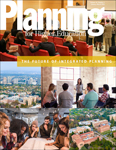- Planning Types
Planning Types
Focus Areas
-
A framework that helps you develop more effective planning processes.
- Challenges
Challenges
Discussions and resources around the unresolved pain points affecting planning in higher education—both emergent and ongoing.
Common Challenges
- Learning Resources
Learning Resources
Featured Formats
Popular Topics
- Conferences & Programs
Conferences & Programs
Upcoming Events
- Community
Community
The SCUP community opens a whole world of integrated planning resources, connections, and expertise.
Get Connected
Give Back
-
Access a world of integrated planning resources, connections, and expertise-become a member!
- Planning Types
Planning Types
Focus Areas
-
A framework that helps you develop more effective planning processes.
- Challenges
Challenges
Discussions and resources around the unresolved pain points affecting planning in higher education—both emergent and ongoing.
Common Challenges
- Learning Resources
Learning Resources
Featured Formats
Popular Topics
- Conferences & Programs
Conferences & Programs
Upcoming Events
- Community
Community
The SCUP community opens a whole world of integrated planning resources, connections, and expertise.
Get Connected
Give Back
-
Access a world of integrated planning resources, connections, and expertise-become a member!
 Planning for Higher Education Journal
Planning for Higher Education JournalTo Think as Nature Thinks
Optimizing Connectivity: Envisioning the University as a Complex Living System From Volume 44 Number 2 | January–March 2016By John Cimino
From Volume 44 Number 2 | January–March 2016By John CiminoThis article lays the groundwork for “the connected university” as the most desirable, most robust operational platform for both achieving institutionally coherent integrated planning and delivering on the mandate to grow, challenge, and inspire creative young minds. Beginning with Bateson’s prescription that we “learn to think as Nature thinks” and appreciating not only the connectivity and related mental processes embedded in large-scale natural systems but also the inherent connectivity and associated mental processes underlying our disparate branches of knowledge, the author argues for a more experimental and deliberate approach to manifesting this connectivity and the corresponding critically important mental processes across the structures, departments, pedagogical forms, and policies of our universities. Our universities too, he says, need to learn to think as Nature thinks. He points to the “connectivity imperative” voiced over the years by thought leaders in multiple fields, including Thomas Homer-Dixon, Franz Johansson, Albert Einstein, Vartan Gregorian, and Buckminster Fuller while at the same time acknowledging the obstacles to connectivity so deeply embedded in our university cultures, practices, politics, and reward systems. Turning to his own story, the author recounts how as a youngster, prompted by a unique gift of Chopin’s music and Einstein’s writings, he first began to think about the exciting hidden connections to be discovered by combining and savoring experiences from different disciplines. He underscores the tricky interplay of belief and perception as we endeavor to figure out how the world works—how what we believe informs perception and how new perceptions, mediated by learning and experience, can inform what we believe—charging our educational systems, and higher education in particular, with the responsibility of helping students form their world-defining “inner Eye,” that “eye” through which they perceive the world around them and conceive their worlds of the future. He concludes with a list of prototypes and “winning solutions” that have enhanced connectivity within several universities with which he has had personal involvement. His vision for the transformation of universities is ultimately pragmatic as well as idealistic, moving institutions toward greater connectivity through the proliferation of modestly scaled “pocket” connectivity programs as well as university-wide integrated planning initiatives where larger scale and more radical visions might be debated and strategized with unfettered imagination and a sense of urgency.
MEMBERS ONLY
Attention Members: Log in to access this item.Not a member? Join now to access this article and all journal articles for free.



